I drop my fifteen-year-old daughter off to take the SAT at a school where nearly twenty years ago (during my MFA years!) I used to substitute teach, here in the scrappy yard garden part of town where we also used to live-- the part of town a lot like the inside of my brain, those beautiful shadowed places I miss-- and I drive away to write a newsletter. Instead, I find myself looping that ribbon of road along the river, then wandering the delphinium, phlox, and pine trees at Riverside State Park, just over the extension bridge at Bowl and Pitcher.
Is there anything sexier, I write in my notes, than a trembling larkspur in the columnar basalt, with the river raging like an intersectional feminist beyond? – while the balm of arrowleaf balsamroot blooms and blooms on?
When I was in high school, I had to have my friend Corey borrow our teacher’s car (I didn’t have a license yet/ and in whose vehicle would I drive?/ and who would pay the fee to license me anyway?/ and who would drive me to take the licensing test?). For the SAT, we wound for an hour on Rural Route 4 to Longview, entered a brick school not unlike the one my daughter heads into as a sophomore, me a senior taking the test which I would try just this once, and hope my score was good enough to get into the one college where I applied (read more about my thoughts on the SAT in my Rumpus essay, “Complete the Sentence”). Corey and I, listening to Counting Crows and Nirvana and probably John Cougar Mellencamp, wondered about getting out of our small towns for good.
Later, my daughter will exit the test site a little stressed—the proctor had trouble checking them back out—and we’ll head downtown to pick up her packet for Bloomsday, a 12K road race that takes place during the time of year morel mushrooms have popped, lilacs fill our valley with that scent Celts believed could transfer us, via olfactory encounter, to fairyland; and in the wilds and state parks, the larkspur trumpet out blue-cyan and hook-clawed like a visually loud bird.
Larkspur (delphinium) grows in the western states of North America, and thirteen different species of pollinating bumble bees have been found on these flowers where their ranges overlay.
I like these kinds of overlapping details—a favorite wildflower, a favorite pollinator—and how they remind me we need to always converge science and art. Meanwhile, Trump is making cuts to NSF, NEA, NEH—those organizations that help science, arts, and humanities. That help brains. I read of yet another friend whose public justice work is cut due to the wannabe-autocrat’s slashing of all good things in America, and I grow angry as William Gas when he penned “I write because I hate. A lot. Hard.”
RECOMMENDATIONS ROUNDUP
This newsletter’s Recommendations Roundup is of regional groups that specialize in helping make space for more thinking, more education, more clean water, more opportunities for youth and marginalized peoples — maybe youth whose moms aren’t able to drive them over and over to the SAT (like me when I was a teen) or maybe those who can but could use a place to learn about finally writing their memoir, attracting pollinators to their urban garden. If you’re in a position to help such beautiful endeavors stay running despite federal/state/tyrannical budget cuts (and if not monetarily, can in some way give time or promotional efforts), consider:
Peace and Justice Action League of Spokane (PJALS)
Timberland Regional Library Systems
Washington Native Plant Society
Mineral School/ Mineral Arts & Residencies (MARs)
Elk River Arts & Lectures- Writers Workshop
. . . NEWS!
What I’m reading / re-reading
CMarie Furhman’s meditative and deeply knowing Salmon Weather: Writing From the Land of No Return (essays, CSU Press)
Kirsten Sundberg Lunstrum’s fabulous research-rich Elita (a novel, Triquarterly Books)
Jane Wong’s catalog of dreamy ghosts How to Not be Afraid of Everything (poetry, Alice James Books-- AJB)
Spring writing conferences and festivals, oh my
Back in March, I ventured to L.A. to see so many on-and-off-page loves for the Association of Writers and Writing Programs Annual Conference. A few highlights: witnessing some big climate writing energies from Camille Dungy, Taylor Brorby, and crew on their (Re)writing the West panel; emcee Jenny Molberg serving up a delicious poetry lineup of Kim Addonizio, Chen Chen, and so many others; the delight of Elk River Books/ Western Colorado University booth selling out of all but one copy (of out takes & Advanced Poetry) at my book signing; hopping all around the book fair buying up new titles by Julia Kolchinsky, John Taylor, Matt Nienow, Mita Mahato, Hilary King, Julie Kane, and my new (as of fall ’25!!) colleague for CWU, Candace Walsh.
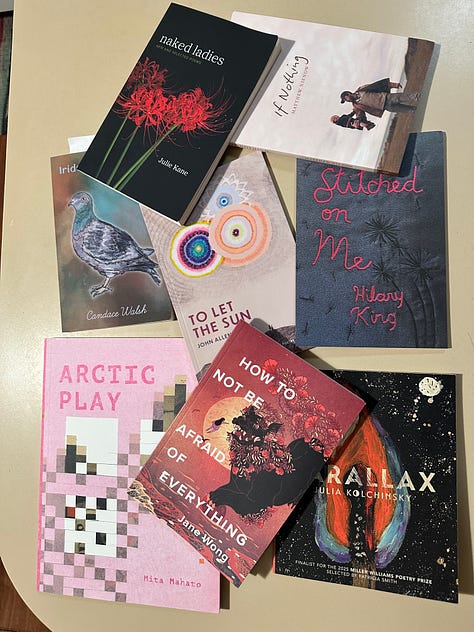
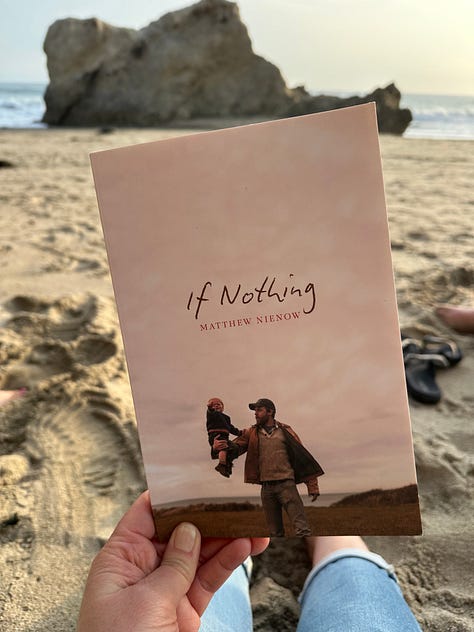
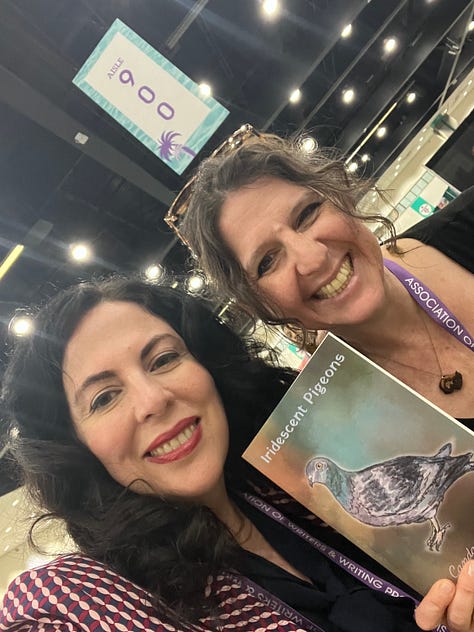

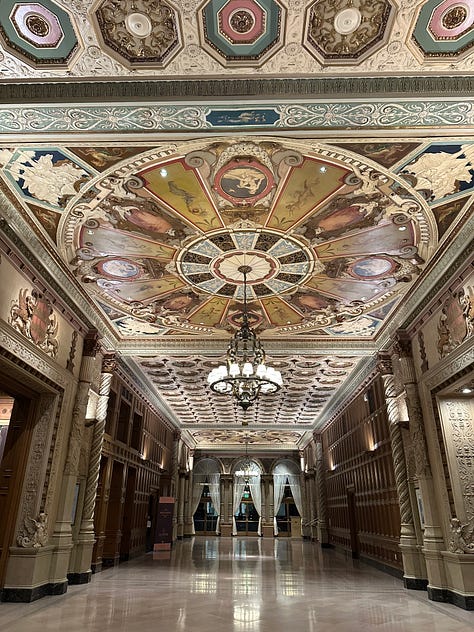
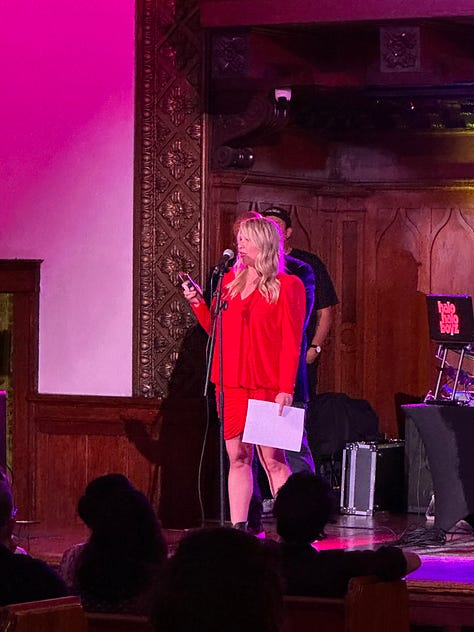
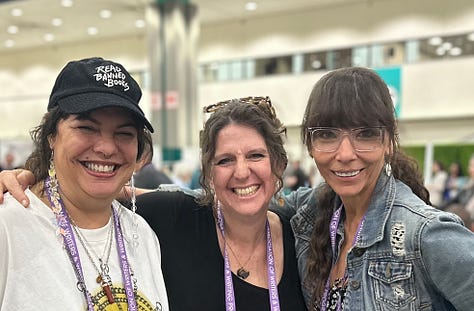
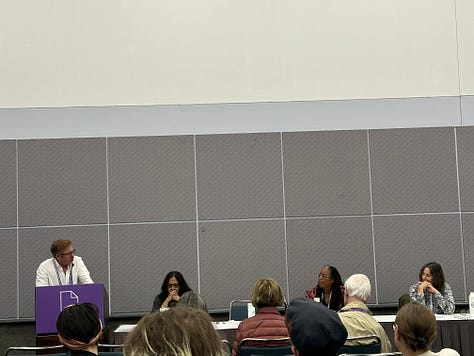
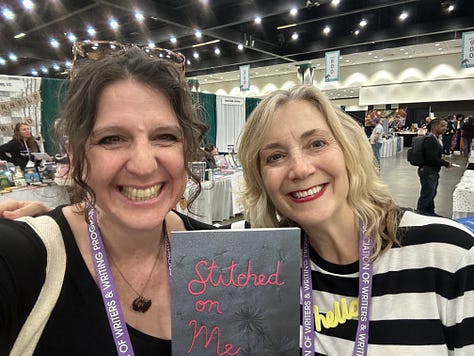
. . . Additionally, we drove to the coast for a glorious afternoon with Laura Pritchett and Rebecca Williams at Leo Carillo State Park, where folks read aloud from many of the titles above and listened to Laura rate passing beach dogs (“that one’s a 10!”).
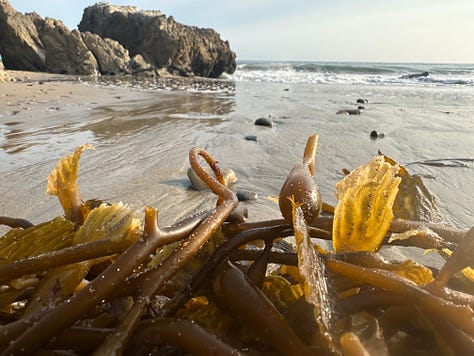



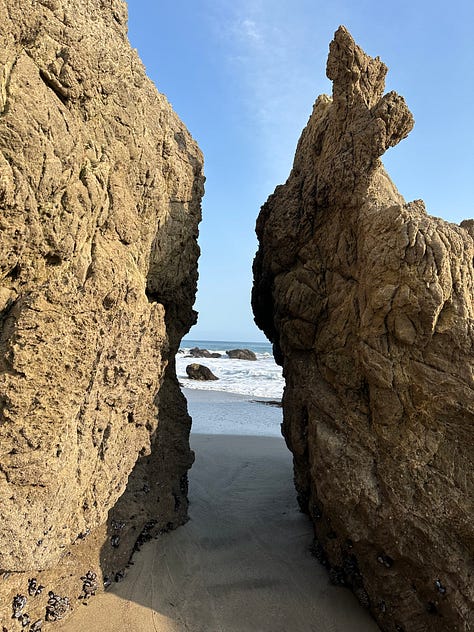

In April, Spokane hosted our annual GetLit! Festival; Danez Smith crushed it—gushing onstage at the Bing Crosby Theater about our gush-worthy downtown waterfall(s)—and some of my students drove round trip six hours to bask in the literary extravaganzas. Definitely recommend this excellent festival, which also featured SpokAnimal rescue and an open mic event kicked off by feature Jessica Johnson reading cat poems. Me-ow!



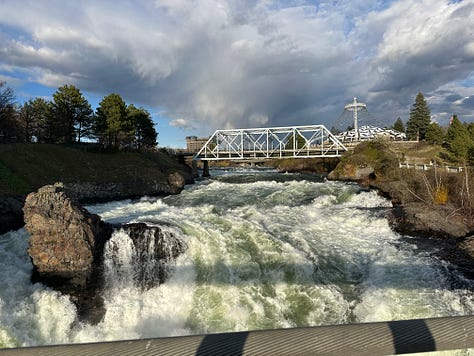
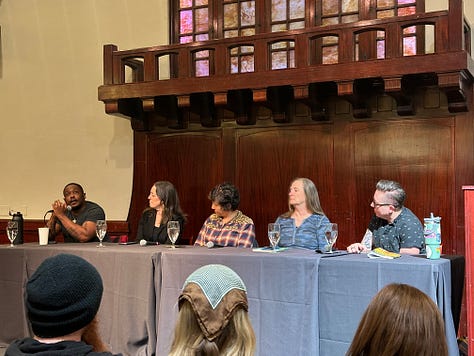
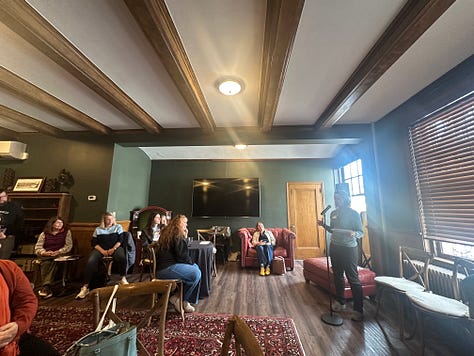
Writing Prompt
The larkspur listens, "I hear, I hear;"
And the lily whispers, "I wait."
-Alfred, Lord Tennyson
Choose a plant or animal you love—spend time with it, taking notes on all five senses’ observations. Then, from those observations, craft ten appositives (grammatical re-namings, or noun phrases that re-name other noun phases, often offset in a sentence by commas).
For example: the delphinium’s hooked blossoms might be called lark’s foot, which is how “larkspur” was named—so in, “delphinium, that lark-footed flower,” the first noun is “delphinium” and the noun phrase “lark-footed flower” is the appositive. Other appositives for delphinium or larkspur could be: blue-faced bird flower, place where bees kneel with their burdens, pollen-medicine-sac, purple-stained tooth of the earth, cyan tail on a stem.
With your appositives, either craft a litany of renamings into a little ode, or intersperse them into a longer work in which your plant/ animal factors as a character or other force—prose or poetry, your choice. Maybe you want to let the plant talk, or maybe you want to talk to it: Delphinium, you lark-claw of a flower, I nearly crushed you underfoot. Your cyan tail on a stem bounced up, and I ducked around that charred log under which you grew. You might find this colorful through-line gives your prose more energy; or you might simply write a beautiful little joyspell you can say to yourself (or your flower) when you’re a little blue.
Upcoming Events
June 14, Reading, Winthrop Lit Fest. (Northern Central Washington State)
July 18-25, Teaching, Western Colorado University MFA Residency (Gunnison, Colorado)
Have a question or suggested topic? Reach out. My chat is open.






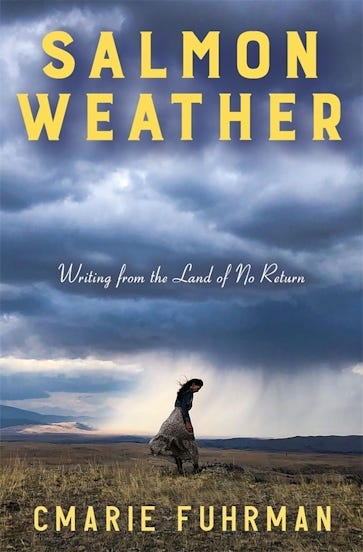
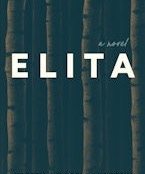
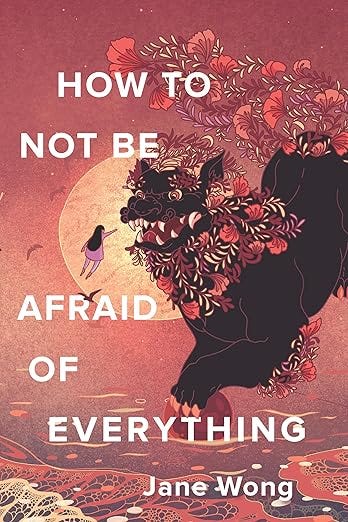
I am all about this prompt! I loved reading about what’s been going through your mind and days. Thank you for including me in your AWP collage of moments!
I love you Maya!! Thank you for inviting us to be alive in the natural world!